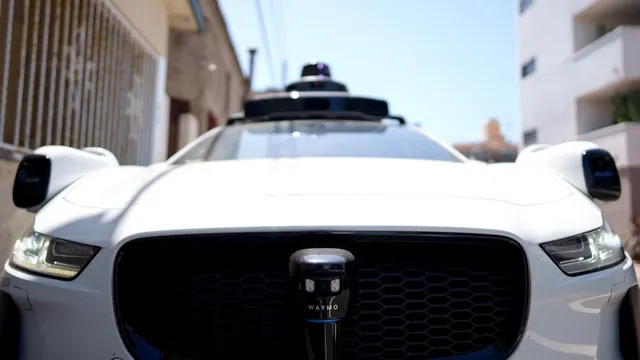
Waymo seeks permit to test self-driving cars in New York City
2025-06-19 12:56- Waymo has applied for a permit to allow its self-driving cars to operate in New York City with a trained specialist at the wheel.
- This initiative comes as part of a broader goal to eventually implement fully autonomous ride-hailing services in the city.
- The process underscores Waymo's commitment to navigating legal requirements while advocating for changes in state laws regarding autonomous vehicle operation.
Express your sentiment!
Insights
In the United States, Waymo has announced its intention to return its self-driving cars to New York City by applying for a permit from the city's Department of Transportation. The company, a part of Alphabet, aims to test its vehicles equipped with a trained specialist behind the wheel, complying with state law which mandates that an operator must be present in case of emergency control. This permit application marks a significant step in the company's broader plan to provide a fully autonomous ride-hailing service in the future. Currently, Waymo operates with manual drivers until the permit is approved, preparing for an eventual launch of driverless services. Since first testing in Manhattan in 2021, Waymo has utilized its cars primarily for data collection. Their self-driving technology is already successfully operational in cities like Los Angeles, San Francisco, Phoenix, and Austin, where they have established a user base, making over 250,000 rides each week with more than 1,500 vehicles. However, the highly dynamic urban environment of New York City presents unique challenges that the company must navigate to ensure public safety and adhere to city regulations during testing. Waymo's objective is not limited to testing; they are also advocating for changes to state law that currently restrict the operation of fully autonomous vehicles. The law stipulates that a trained operator must always be able to take control if necessary. Waymo has expressed its commitment to working with local authorities and transportation officials to facilitate the advancement of autonomous technology in New York while ensuring the city's safety priorities are met. Mayor Eric Adams's office has stated that they are reviewing the permit application and is focused on responsible innovation within the city’s transportation framework. The context of this initiative comes amid growing competition in the autonomous vehicle market, particularly with companies like Tesla pushing for their own robotaxi services. As Waymo continues its efforts to expand, it hopes that successful testing and eventual deployment in New York City would solidify its role as a leader in the autonomous vehicle space. Waymo's return is not just about technological advancement, but also an essential step towards shaping the future of urban mobility in one of the world's most complex driving environments.
Contexts
The emergence of autonomous vehicles (AVs) in urban areas presents both opportunities and challenges in terms of safety. As cities worldwide adapt to accommodate the influx of these technologically advanced vehicles, implementing robust safety measures becomes paramount. The primary goal of these measures is to ensure not only the safety of the occupants of AVs but also the pedestrians, cyclists, and other road users. This requires a multidisciplinary approach that combines engineering, urban planning, public policy, and community engagement to address potential risks associated with AV operation in complex urban environments. One of the key safety measures involves the integration of advanced sensing and communication technologies, which enable AVs to perceive their surroundings accurately and respond to dynamic traffic conditions. Lidar, cameras, and radar systems work together to create a comprehensive understanding of the vehicle's environment, while vehicle-to-everything (V2X) communication enhances awareness of road conditions and potential hazards by sharing information with other vehicles and infrastructure. However, the effectiveness of these systems can be compromised in adverse weather conditions or when sensors are obstructed. Thus, continuous improvements and redundancy in safety systems are essential to mitigate these risks effectively. In addition to technological enhancements, establishing clear regulatory frameworks and standards for AV operations in urban settings is critical. This includes setting safety benchmarks for manufacturers, ensuring that AVs undergo rigorous testing in diverse scenarios before being released for public use. Urban planners must collaborate with transportation authorities to design roadways and intersections that are conducive to AV operation, prioritizing safety through features such as dedicated lanes, traffic signals specifically designed for AVs, and pedestrian-friendly zones. Moreover, public awareness campaigns play a crucial role in educating citizens about the presence and functionality of AVs. Engaging communities in discussions about AV safety can foster trust and acceptance, ultimately leading to safer coexistence between AVs and traditional vehicles. Finally, accountability remains a crucial component of AV safety. Clear liability laws must be established to determine responsibility in the event of an accident involving an AV. This includes not only the manufacturers of the vehicles but also the operators, especially in cases where human intervention may occur. By creating a comprehensive legal framework that addresses liability, cities can enhance public confidence in AV technology and encourage responsible usage. As urban areas continue to evolve with the integration of autonomous vehicles, focusing on safety measures will be key to realizing the full potential of this transformative technology while ensuring the protection of all road users.